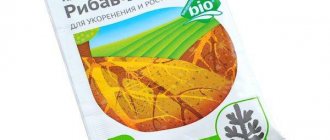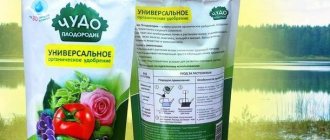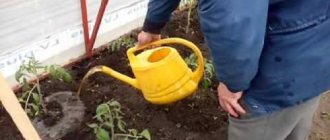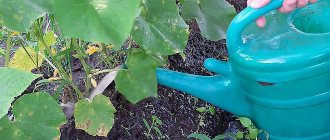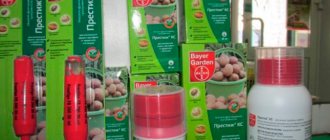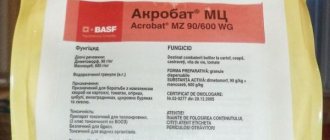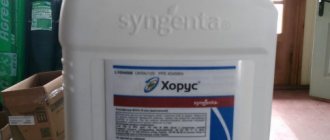Properties and composition
During all stages of the growing season, plants need support in the form of organic and mineral fertilizers. Farmers choose affordable and safe formulations that are easy to use and contain substances necessary for the development of crops. The advisability of using Borofoska fertilizer in the garden is dictated by its composition. The main components are phosphorus and potassium. Additional - boron, magnesium and calcium. The listed substances actively participate in the biological processes of agricultural crops.
The percentage of useful substances in the drug is as follows:
- 20% calcium carbonate;
- 16% potassium oxide;
- 10% phosphorus pentoxide;
- 2.5% magnesium oxide;
- 0.25% boron.
The substance benefits seedlings and flowering ornamental plants. It is used, as a rule, in spring and autumn, but the instructions for use allow the use of fertilizer throughout the entire growing season.
Special benefit
Pome fruits (pears, apple trees), stone fruits (plums, apricots, peaches), berry bushes (raspberries, gooseberries, currants), as well as garden strawberries respond positively to fertilizing. Fertilizer is applied once or twice a season.
In addition, the fertilizer is also useful for ornamental plants. Tulips, hyacinths, daffodils, crocuses, lilies of the valley, etc. bloom more luxuriantly and for a long time with regular additions of the substance in a volume of 15-25 g per hundred square meters of flower bed, repeated every 21-30 days.
Vegetable crops such as tomatoes, eggplants, peppers, pumpkins, potatoes, carrots, and beets also need additional nutrition. Melons (melons and watermelons), as well as legumes (peas, beans, soybeans) and cereals - cannot do without nutritious borofoska throughout the season up to two or four times.
Main effect on plants
The beneficial effect of the Borofoski fertilizer on plants is due to the potassium and phosphorus it contains.
Potassium accumulates in the cytoplasm and is responsible for the following processes:
- delivery of nutrition to cells;
- normalization of water absorption, transportation of water to all parts of the plant;
- accumulation of sugars and starch in vegetables, berries, fruits;
- increasing resistance to infections and stress resistance.
Phosphorus is present in Borofoska in the form of carbonate, so it is not washed out of the soil and has the following effects on plants:
- increases productivity due to a positive effect on reproduction;
- helps root formation;
- enhances growth and fruiting;
- helps the development of seedlings.
Calcium increases the viscosity of the cytoplasm, increases its permeability for the full development of the plant and abundant flowering, boron stimulates growth, promotes flowering and pollen formation, and magnesium stabilizes ascorbic acid in tissues and fruits.
Organic fertilizers
One of the most accessible organic fertilizers for tomatoes is mullein. The nutrient solution is easy to prepare with your own hands. With mullein, a large amount of micro- and macroelements useful for the growth of tomatoes in open ground is added to it. Calcium, magnesium and potassium are found in nettle leaves, which can be added to a nutritional formula. These elements are necessary for the normal development of tomatoes in open ground. To prepare a nutrient solution, mix 1 tbsp. potassium sulfate with 0.5 liters of mullein and dilute them with 10 liters of water. All that remains is to thoroughly mix the composition and begin processing. You can also water the beds with mullein, but not more than 2 times a month (1 liter per bush).
Many summer residents and gardeners fertilize their plants with bird droppings and mullein. In this case, about 15-20 g of superphosphate is added to a bucket of organic matter. This amount will be enough for 10 bushes. Subsequent feeding is done with dry mineral fertilizers. If you use organic fertilizer for tomatoes, it is best to apply it to the prepared furrows. During watering, nutrients will gradually saturate the soil with the necessary elements. During flowering, tomatoes are fed foliar with a solution of boric acid, molybdenum ammonium and magnesium sulfate.
To feed seedlings, use 0.1 liters of solution per 1 m² of area; the best time is cloudy weather or evening hours. When the composition hits the leaves, plants quickly absorb nutrients, which affects rapid growth and a good harvest. Nitrophoska can be used as a nutrient solution.
Proven advantages and disadvantages
If the drug is used according to the instructions, there will be no harm to the crops grown, but it is not recommended to use the substance on acidic soils.
This fertilizer has almost no disadvantages, but there are plenty of advantages. The composition of the fertilizer includes an optimal complex of substances presented in a form that is easily digestible for plants. The fertilizer does not accumulate in the soil, does not contain chlorine, increases plant immunity, reduces the alkaline reaction of the soil and supports active crop vegetation, including abundant flowering and fruiting.
How to choose a herbicide
The choice of herbicides for strawberries and wild strawberries depends on:
- Processing period. If the gardener decides to treat the soil before planting berries, then it is best to choose Galtix or Bentanal. When the weeds have already entered the active growth phase, Glyphosate is best suited. All these tools help you forget about weeding for a long time. A systemic herbicide is used during intensive development of strawberries or wild strawberries. 1 month before harvesting, it is not recommended to resort to chemical treatment; it is better to get rid of the grass mechanically.
- A type of parasitic grass. The most effective results are achieved by applying herbicides according to the type of weed. Preparations such as Fluzilad Forte and Targa Super can effectively combat parasitic cereal grasses. Lontrel 300 is suitable for strawberries. It will take 2 weeks to completely get rid of weeds. The main thing is to ensure that the product does not get on the leaves of cultivated plants. The ideal period for the treatment procedure would be early autumn.
- The quality of the product used. All selected drugs must be of exceptional quality and as safe as possible for use. The plant should not feel stressed by the herbicide. In the store you can find drugs that will not only help cope with parasitic grass, but also improve health and stimulate the growth of strawberries and wild strawberries.
With the onset of the first autumn, after removing the leaves, it is necessary to treat the soil with herbicides containing lenacil. All products used must be constantly changed; it is not recommended to use the same drug for a long time.
After using herbicides, it is not recommended to loosen the soil for the next 20 days
Such drugs can harm people and animals, so it is important to follow all safety measures when treating soil against weeds. Do not increase the dosage, which is determined for each individual drug
Strawberries are a perennial berry. Work in the garden continues even after the harvest, because saving strawberries from weeds is not all that needs to be done. In addition to using herbicides, you need to get rid of the mustache, and also remember to water and fertilize the strawberry plantings, otherwise there may be no harvest next year.
Parasitic grass takes away light, moisture and nutrition from strawberries, spoils the roots and attracts insect pests. Weed control continues throughout the summer season, so without herbicides it will be difficult to get a good harvest. We wish you victory in this difficult struggle, a great harvest and a great mood!
Send to your social network so as not to lose:
Methods for seasonal fertilization
Fertilizer "Borofoska" is used for digging. The granules are deepened into the soil by 10 cm. If the site is treated in the spring, work begins as soon as the snow melts. The best time to use the drug is the period of active growth of green mass and the beginning of budding.
Fertilizer consumption rate per 1 m2:
- 60 g - for digging;
- 70 g - for legumes and vegetables;
- 100 g - for ornamental plants and flowers.
Trees and shrubs on the site are fertilized with a solution of 25 liters of water and 5 tbsp. l. "Borofoski".
Testing "Borofoski" as an ameliorant
A number of studies have shown that “Borofoska” can serve not only as a fertilizer and deoxidizer, but also as an ameliorant for the rehabilitation of soils contaminated with radionuclides. In particular, a field test of the effect of “Borofoski” on reducing the mobility of cesium-137 on contaminated soils was carried out in the Bryansk region.
For the purity of the experiment, different ameliorants were used at different test sites - potassium chloride, phosphate rock, ammonium nitrate, sapropel, limestone flour.
“The greatest effect of reducing the transition of cesium-137 into the green mass of perennial grasses was observed from the use of Borofoski. The reduction factor was 3.85-4.8 times.”
P.V. Prudnikov, researcher at the Bryansky Center for Chemicalization and Agricultural Radiology
Thus, “Borofoska” can be considered a valuable tool for summer residents who have to reclaim environmentally problematic areas.
High levels of cesium-137 in the soil can be observed in areas located near highways, industrial enterprises, military training grounds, and nuclear power plants. Getting into the soil with precipitation, it is actively adsorbed by soil particles and absorbed by plants, replacing potassium. The harvest from such areas is hazardous to health.
Recommended dosages and timing of application
- tomatoes. “Borofoska” is used at any stage of the growing season of a given crop, as well as in the fall before digging up the site. Tomato seedlings are maintained by adding a certain amount of the drug to the nutrient substrate. If the beds are prepared in the spring, the granules are embedded in the soil during the process of loosening the soil. Watering with a nutrient solution is scheduled at the stage of budding and fruit formation;
- strawberry. Due to the fact that fertilizer does not accumulate in fruits, Borofoska fertilizer is ideal for strawberries. Thanks to it, the berries are large and sweet. Fertilizing is carried out at the flowering stage, repeated after 10 days and when the ovaries are formed;
- potato. Fertilizer increases the starchiness of tubers, the amount of potassium and sugars. The potatoes themselves will become optimally crumbly. Fertilizing is also used as a means of preventing dry rot and late blight;
- grape. There is no point in fertilizing adult plants in the fall, but young vines are fed during the mulching process, fertilizing with granules and covering the trunk circle. In spring, the drug is applied as soon as the leaves appear, and a second time - at the flowering stage;
- fruit and berry crops. “Borofoska” can be added directly to the mulch when trees and shrubs are prepared for wintering. Spring work comes down to embedding granules into the soil. Watering with a nutrient solution is carried out at the stage of flowering and ovary formation, and the last treatment is scheduled for the fruits to reach technical ripeness;
- flowers and ornamental shrubs. Fertilizer is used for moisture-recharging irrigation. This way the roots will accumulate liquids and overwinter well. In spring, the nutrient solution is used for watering at the stage of leaf formation, as well as budding.
Features of use for different crops
Given its flammability and explosive properties, nitroammophoska can be stored at a temperature of no more than 30°C. Preservation should be carried out in premises built of brick or concrete.
To prevent granules from sticking together, the humidity during storage should be no higher than 50%.
When applying fertilizer, be sure to wear rubber gloves and a respirator.
Nitroammophoska is used both before sowing or planting, and on growing crops. The best results are achieved on gray soils and chernozems, on sufficiently moist soil.
On heavy soils it is better to apply nitroammophoska in the autumn, on sandy soils - in the spring.
In the autumn, about 42 g per square meter should be added when digging up the earth. When processing virgin soil, 50 g per square meter should be added. Greenhouse soil requires 30 g per square meter.
How to safely use nitroammofosk fertilizer? This chemical is explosive and should be kept away from heat. Store in brick or concrete cold rooms.
To avoid trouble, you should adhere to the following rules:
- do not allow the material to be exposed to heating devices and open fire;
- the temperature inside should not exceed 30°C, and the air humidity should not be more than 50%;
- Nitroammophoska is stored separately from other mines. fertilizers so that there is no involuntary fire or explosion in storage areas;
- transportation is carried out by land transport, observing the required temperature during transportation;
- The shelf life of the material is no more than 6 months;
- Use gloves and a respirator while working.
By following these simple requirements, the use of nitroammophoska will be safe for human health and the environment around.
Use protective equipment when working
The use of nitroammophoska allows you to increase the yield of vegetables and improve their taste, increase the resistance of young fruit trees to frost and strengthen the immunity of plants.
The composition and use of nitroammophoska makes it indispensable in the soil where mole crickets may be found. This pest appears in areas fertilized with simple manure.
Some recommendations have been developed for the use of this fertilizer for specific garden crops and trees.
Compatibility with other drugs
Before you start working with the drug, you should study the instructions for use of “Borofoski”, which strictly regulates when and how to apply fertilizer, and also determines the dosage.
With the simultaneous use of this fertilizer and peat, an increase in the quality of the soil is noted, the earth is enriched with useful elements. Other favorable combinations are with organics, nitrophoska and superphosphate. In the spring, you can simultaneously apply nitrogen-containing fertilizers, but in the fall, nitrogen is contraindicated. You should not combine Borofoska with urea, since this seriously reduces the effectiveness of the former.
Instructions for use
Gardeners are usually guided by the needs of specific plants for potassium, phosphorus, and other elements.
On sandstones, the use of Borofoski does not in any way affect the density of the humus layer. When the drug is combined with peat, an increase in the content of organic substances by 25% is observed, while the acidity remains the same.
There are several ways to use Borofoski. When digging into the ground, about 9 kg of the drug per hundred square meters is embedded. In cases where fertilizing is required during planting or a little later, the dosage is reduced to 6 kg.
When plowing the soil shortly before sowing, based on current agrochemical indicators, it is customary to add: 65 g of the drug per meter; for legumes, cereals, flax, potatoes and other root vegetables, herbs - 105 g per meter.
Reviews from summer residents and gardeners
Summer residents with many years of experience use this product as a phosphorus-potassium fertilizer for growing cucumbers and tomatoes. Thanks to timely feeding, plants develop quickly, bloom fully, and produce many ovaries. Comparing fruits grown with and without this fertilizer, they note improvements in taste. Productivity is also encouraging.
Flower growers are also interested, especially for caring for capricious flowers. A rose garden in conditions of potassium and phosphorus deficiency will not be lush and blooming. For amateur and commercial flower growing, the drug is used throughout all seasons except winter. In the fall, the granules are embedded in the soil, the treatment is repeated in the spring, and then the flowers are watered until flowering is complete.
When to Process Strawberries
In principle, garden maintenance should be done year-round. This completely applies to strawberries. At least throughout the entire summer season (from early spring to late autumn), it is necessary to monitor the condition of the plantations, promptly remove diseased plants, pull out weeds, and prevent the soil from drying out and crusting. Treatment of strawberries with drugs is not necessary so often. This should not be done immediately before planting the crop and during its harvest. And in early spring and especially in autumn it is worth doing something.
Spring procedures
Spring processing of strawberries consists, first of all, of thoroughly removing plant debris, frozen and dried leaves, and dead plants from the plantation. After thorough cleaning, the soil around each bush should be loosened and fertilized. In the spring, it is quite logical to apply (according to the instructions) nitrogen fertilizers, as well as mulch the bushes with humus. Pest control is not always carried out in the spring; it is better to leave such work for the fall.
Autumn chores
After harvesting, you need to carefully examine the strawberry bushes. Those that are of little use (deformed leaves, thickened stems, significant holes and spots on the leaves are noticeable) should be immediately pulled out and burned.
If a plantation is severely affected by a nematode, it is better to destroy it completely: burn the bushes and soak the beds well with a solution of iron sulfate. The concentration of the solution is approximately 5%, and it should be poured until it is very wet.
Calendula is a good insecticide for strawberries
Strawberry mites should not be left in the winter either. If you want to do without chemicals, you can water the garden bed several times a week with an infusion of onion peels. To do this, pour about 200 g of husk with a bucket of water, leave for 3-4 days, strain.
If there are a lot of different pests, but the situation is not yet critical, immediately after the last berry picking you can try to mow down all the leaves and burn them. Many people do this with 3-4 year old strawberry plantations anyway. It’s good if, after mowing, the sun fries the remains of the bushes for several days. After this, you need to water the bed well, preferably with the addition of fertilizers: phosphorus and potassium. The foliage will grow back quickly and will be significantly healthier.
If there were a lot of rotten berries, after harvesting the bushes can be treated with mustard infusion (100 g per bucket of water, leave for 2 days, filter and dilute by half). If you are not too afraid of “chemistry,” you can take copper oxychloride instead of mustard and follow the instructions for the drug.
In case of powdery mildew, one of the best solutions is to spray with a solution of Topaz. Bordeaux mixture is very effective in the fight against fungal diseases.
